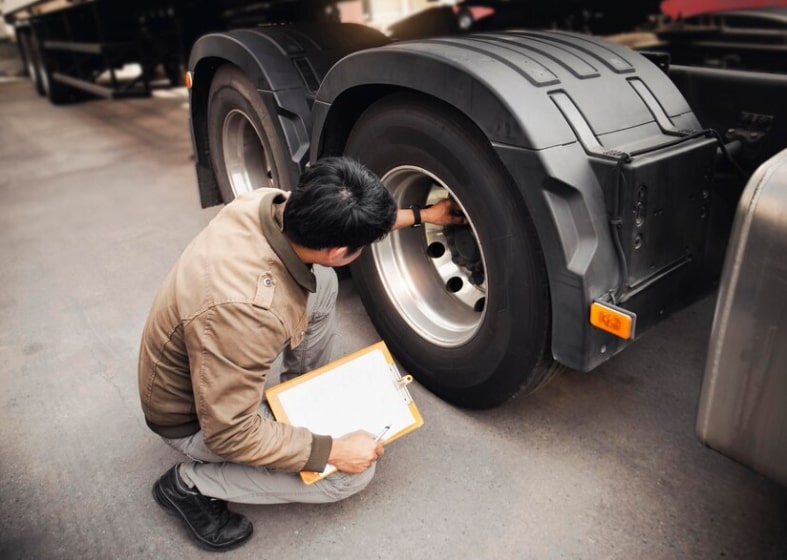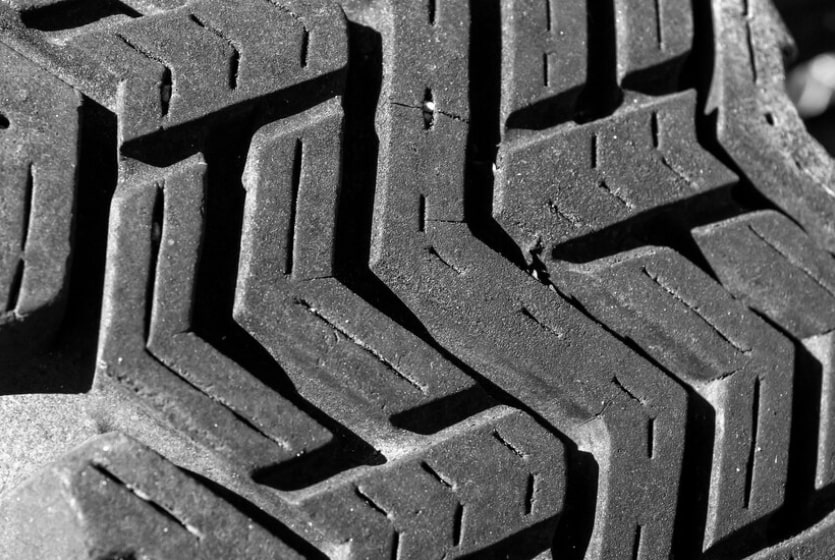Common Tire Wear Patterns
Here are some common truck tire wear patterns, including:
Inner or Outer Shoulder - Wear Misalignment
If you check your tire visually and notice that the inside or outside part is wearing down faster than the rest, it probably means your vehicle's wheels are not aligned correctly. This kind of wear shows that your wheels lean too much to one side, usually because of alignment issues. Bad alignment can mess with your steering, suspension, and safety. So, getting alignment services immediately is essential.
Inflation In The Middle Wear
Have you noticed that the middle part of your tires is getting worn out quickly? It could mean your tires have too much air. When your tires have more air than they should, they touch the road mainly in the middle, making the central part wear down faster. To avoid this, check your vehicle manual for the right amount of air and inspect tire air regularly!

Under Inflation - Edge Shoulder Wear
If your tires have wear on the edges, they might not inflate enough. When tires don't have enough air, the edges touch the road, making them wear out faster on the sides. To avoid this, make it a habit to check your tire pressure often! If you see wear on both sides, it could also mean you're taking sharp turns or not rotating your tires correctly.
Cupping - Troubles With Suspension
Smooth spots or small dips on your tire indicate issues with the truck’s bouncing system. Some parts that help your truck bounce are likely worn out or bent. Did you hit a curb or pothole recently? If you spot bumpy tire patterns or hear a little rumbling when you drive, it's crucial to have your bouncing system checked. Replace any old or bent parts to keep your drive smooth.
Feather Wear
Detecting feather wear is quite simple. A technician must touch the tire and slide their hands up and down to determine the issue. Usually, feather wear happens because of a problem with the alignment, often linked to a bad toe condition. Toe-in occurs when two tires point in, so their front edges are closer than the rear edge. Toe-out is the opposite. The wear pattern is a bit like how a bird's feathers overlap: when the technician runs their hand over the tire, it feels smooth in one direction and rough in the other, created by the toe condition. Remember this simple rule: Smooth-in means there's a toe-in issue, while smooth-out means it's toe-out. Feather wear can also happen from side-scrubbing or if the drive axle is severely misaligned.

Care and Maintenance Tips for Heavy Truck Tires
Taking good care of your heavy truck tires is important to make them last longer. Here are some simple tips to help you do that for Truck Tire Repair:
Keep The Right Pressure
Make sure your tires have the right amount of air in them. They can wear out unevenly if too full or insufficient, and your truck might use more fuel. Check the air pressure regularly and add or let out air as needed.
Choose The Right Tires
When picking tires for your big truck, think about what you need. Consider things like how much weight the tires can handle, the pattern on the tire, and the kind of roads you'll be driving on.
Take Preventive Care
Schedule regular check-ups for your truck at a good service center. This means looking at it regularly, changing fluids, and fixing small problems before they worsen. This keeps your tires happy and your truck running well.
Retread When Needed
If your tires are still in fine shape but starting to wear out, you can save money by getting them retreaded. It's like giving them a second chance, and it's good for the environment.
Safety Considerations for Heavy Truck Tire
Load Capacity Awareness
- Be mindful of your truck's load capacity and ensure it aligns with the tire specifications.
- Consider the dynamic load factor, accounting for the impact of acceleration, braking, and turns on the tires, especially in heavy-duty applications.
Driver Training
- Educate drivers on the importance of proper tire care and safe driving practices.
- Introduce tire awareness programs, encouraging drivers to promptly report any unusual vibrations, noises, or handling issues.
Conclusion
With the help of this post, you now understand tire wear patterns and their related concerns. Get advice from the experts that can smoothen your drive. Advanced Truck and Trailer Repair is here to help fix your tires so you can drive smoothly without any problems. Our special service for improving truck tires is about making them last longer and keeping them in good condition.























